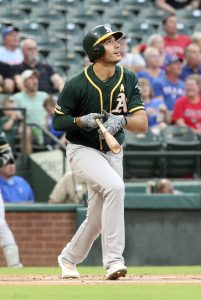Historically, pitching has not been a strength of the Texas Rangers. The franchise has consistently found itself sorely lacking true aces; outside of Nolan Ryan, there aren’t really any iconic pitchers that come to mind when you think of the Rangers. Kenny Rogers, anyone?
That trend held true once again last year, with the Rangers posting an overall 5.09 ERA that ranked seventh-worst in baseball. That said, Lance Lynn and Mike Minor anchored the top of the rotation admirably, each garnering Cy Young consideration and holding the staff intact during the hot Texas summer.
But when the 2020 season boots up, Lynn and Minor will have some help, and starting pitching may indeed be a strength for this year’s iteration of the team. GM Jon Daniels and company made a concerted effort in the winter to acquire starting pitchers—and they did so at relatively little cost, meaning that a bit of short-term ambition likely won’t impeach on the franchise’s future plans.
Corey Kluber is the big-name addition, and the two-time Cy Young winner should do plenty to bolster the Rangers’ staff. Even so, the team didn’t mortgage the future to bring him aboard: Kluber is only guaranteed a contract for this year, with a vesting option that could keep him in Texas through 2021. Coming off a season in which he could pitch in just seven games, he was acquired in exchange for Delino DeShields and Emmanuel Clase, a move that was widely praised at the time and looks even worse for Cleveland in light of Clase’s PED suspension.
But the smaller-scale signings of Kyle Gibson and Jordan Lyles, while not deserving of the same attention as the acquisition of a decade-defining pitcher like Kluber, could together have just as great an impact on the Rangers’ success as Kluber. In the offseason, Lyles signed on with a two-year, $16MM deal, while Gibson earned himself a three-year contract worth $28MM. Together, they’ll make $19MM in 2020, just a hair more than Kluber’s salary.
Lyles has been around forever, it seems, breaking in as a young arm with the Astros and Rockies, but it took until his age-28 season for him to put it all together as a starter. After a slow start with the Pirates earned him a trade to Milwaukee, he put up career-best numbers, striking out 146 batters in 141 innings, an unprecedented rate for Lyles.
How come? The simple version is that Lyles began relying less and less on his sinker, a staple in his repertoire throughout the early stages of his career. His sinker usage dropped to a minuscule 1.7% last year while he threw four-seam fastballs 50.2% of the time, more than he ever had before. The curveball also became a more important weapon in his pitch mix.
That isn’t too unlike the formula that Lance Lynn rode to his career-best 2019 season. Just like Lyles, Lynn’s sinker usage hit a career low last year, replaced almost entirely by four-seam fastballs—largely in the upper part of the strike zone. This isn’t unique to the Rangers—the Astros’ unparalleled pitching brilliance hinges on this philosophy—and it’s a trend that has redefined the way we look at pitching in MLB.
It’s an approach that worked for the Rangers last year, Lynn’s first in Texas, and perhaps Daniels is confident that his staff can use it to produce similar results with Lyles and Gibson this year. Sure enough, the sinker has been Gibson’s most-used pitch through his first five years as a big-leaguer. Sound familiar? Granted, Gibson’s four-seamer hasn’t been a great pitch for him, but throwing fewer sinkers could in turn lead to a jump in his slider usage, a high-spin pitch that may be a hidden gem.
Still, pitching at the MLB level is not as simple as flipping a switch and saying, “sinker bad, four-seam good.” That approach can’t be uniformly applied to every pitcher in baseball with the same results; there’s a reason careers have been forged around the sinker. And yet, the proliferation of the high fastball in MLB lends credence to its value, and the Rangers may have pursued the likes of Gibson and Lyles with that style in mind.
But that’s only half the battle; the burden then falls on the coaching staff and players themselves to accept and implement adjustments. It’s why we still play the games when there’s such a wealth of knowledge out there. So we’ll anxiously await the 2020 season to see whether the on-field results look as good as the ideas that underpin them.

